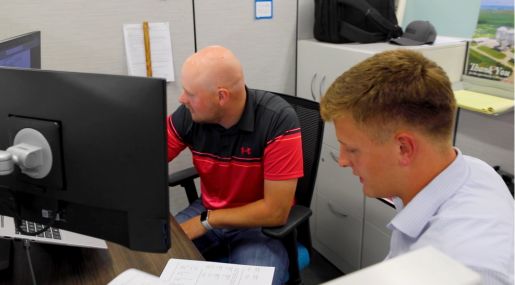
How to Hand Down Your Family Business
Whether you’re a seasoned business owner or just starting out, there’s one thing that’ll always be critical to your business strategy: planning for the future. It’s easy to overlook (out of sight, out of mind, right?!), but to ensure a smooth transition once you no longer wish to be in the picture, succession planning can’t sit on the back burner. We know all too well that while we can’t predict what’s in store in the future, we can prepare for it.
As you think about handing down your family business, you have to navigate complex emotions and practicalities, but that is far easier said than done. How can you prepare your business to continue to thrive under new leadership? Can you minimize tax implications? How can you avoid family disputes during the transition?
Before you waste any time worrying about these potential issues, we want to help you get started and give you a clear roadmap of what to expect when preparing hand down your family business. As a CPA firm that works with family-owned businesses, we know what it’s like to balance professional and personal considerations. The truth is, proper planning is key to a successful transition. Learn from our experience and lessons we’ve learned over the years of transitioning power of family-owned businesses and pass on a legacy of continued success and stability. Let’s dive into the steps you need to take and strategies to implement. Let’s go through the steps and strategies you need to implement to hand down your family business and secure its future.
1. Start Early – The earlier you start planning, the better. Handing down your family business is a complex process that can take years to execute properly. Set a clear timeline for the entire process and identify key milestones and deadlines to keep the planning on track. Starting early gives you ample time to address potential issues and prepare your successor.
2. Identify Potential Successors – Look within your family to identify potential successors to hand down your family business to. Consider their skills, experience, and interest in taking over the business. It’s important to have open discussions with family members to gauge their willingness and readiness to step into your shoes.
3. Develop a Training Program – Once you’ve identified a successor, develop a comprehensive training program. This should include hands-on experience, mentorship, and formal education to give your successor the knowledge and skills needed for their new role. Your successor should understand all aspects of the business, from operations to financial management so they have the confidence to transition smoothly and maintain continuity.
4. Create a Transition Plan – Outline the timeline for the transfer of responsibilities and ownership as a way to clearly communicate with everyone involved. Decide on your future role in the business, whether it’s as an advisor, board member, or stepping away entirely.
5. Consult Professionals – Work with legal, financial, and business advisors to assist with the succession planning process. They can help you navigate complex issues such as tax implications, valuation, and legal documentation.
6. Monitor and Adjust Your Plan – Succession planning isn’t a one-time task. Regularly review and adjust your plan to reflect changes in the business environment, family dynamics, and the readiness of your successor.
Before we send you on your way, here are some final tips for a smooth succession transition:
- Foster open communication – Encourage open dialogue among family members to address concerns and expectations.
- Establish clear roles – Define roles and responsibilities to avoid overlap and confusion.
- Document EVERYTHING – Ensure all plans and agreements are documented and legally binding.
- Prioritize continuity – Focus on preserving the business’s core values and culture.
Remember: succession planning is an ongoing process that should adapt to changing circumstances. Because businesses evolve, and family dynamics shift, your plan needs to be flexible and resilient. As a family-owned business owner, understanding these dynamics and preparing for them can make all the difference.
Your journey to hand down your family business won’t look exactly like anyone else’s, which means you’ll need to tailor your approach to your unique situation. You’ll need to reassess regularly, involve your successor in decision-making early, and remain adaptable to new challenges and opportunities. By doing so, you can secure your family’s legacy and the future of your business!


